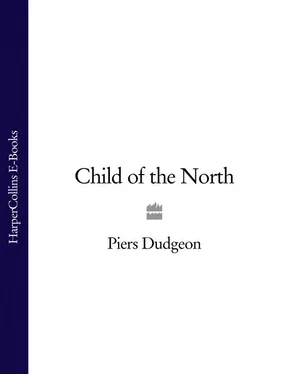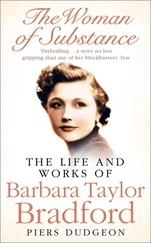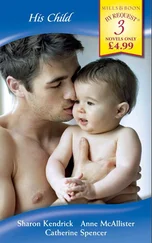He had worked his way up from being a bargee who struggled for a living, going cap-in-hand to such men as Caleb Crowther who once owned most of the mills along the wharf – property that, by rights, had belonged to Emma…You’ll never find a better gaffer than Marlow Tanner.
The new inventions in the cotton industry increased the speed of production and made it more economical. The improved transport enhanced supply of raw cotton and distribution of finished cloth. In 1913, Lancashire as a whole could boast exports of seven billion yards of cloth.
The first mill-worker housing in Blackburn sprang up around Wensley Fold, Blackburn’s first spinning mill, close to where Josephine Cox was born. Seven cottages appeared in 1809, numbers rapidly increasing so that by 1832 the mill master had built eighty-four houses around and about. The mill owned your house, many of the shops in the area and the pub at the end of the road. The master paid your wages and then mopped them up again in any way he could.
Three main mill colonies shaped the burgeoning town from the 1820s: Brookhouse to the northeast, Nova Scotia to the south, and Grimshaw Park to the southeast. By 1847 these colonies had grown so large that they accounted for a third of employment in the cotton industry. These worker colonies comprised endless, closed-in rows of terraced housing, two rooms upstairs, two rooms down, no bathroom, no hot water except that which was boiled in the kettle, no front garden, a backyard scarcely big enough to turn round in and an outside lavatory backing onto a narrow passage. Some of the earliest terraces were back-to-backs with no alleyway between, but it soon became apparent that these posed appalling sanitation and health risks.
Over the following decades, the character of the Blackburn spinners and weavers was challenged by harsh discipline, by regular depressions in the industry, by general poverty and the often appalling conditions in which they had to live and work. The town would become a centre of manufacture for the world, but it would also become a cesspit of human misery, before it began its painful and terminal wind-down, which saw up to fifty per cent of the workforce unemployed in 1930, and by 1957 a two-thirds reduction of its cotton mills, right down to one working mill – Witton Mill in Stancliffe Street – all that is left today.
In Her Father’s Sins , class or poverty levels are measured by the number of gas-lamps in a street, each inscribed with a carving of the Lancaster Rose. We will see that class differentiation and interplay in Blackburn was subtly and strategically staged, so that the mill masters were able to count on the support of the workers, on whose labours they became rich, by engineering a code of loyalty or team spirit akin to that of a modern-day football fan to football club, as if the masters shared the same purpose and values as their workers – which, of course, they did, didn’t they? Only a perceptive few saw the nature of the fraud at the time.
In the mid-twentieth century when Jo Cox was growing up in Blackburn, a quarter of the working population were still engaged in textiles, especially weaving. But it was a much reduced industry, the routine of life giving the appearance of continuity, the daily shape that linked 1950s Blackburn to an age-old tradition of cotton and ale – from the five a.m. rat-a-tat of the knocker-up’s stick to the end of a back-breaking day, laughing and singing in the pubs, which held pride of place in every lamp-lined cobbled street.
There had in fact been change in every generation since the Industrial Revolution took hold. The cold, relentless march of progress occurred in every era, and in the 1950s, change was once again round the corner. With it would come the slum-clearance and rebuilding programme in which Mr Marsden has a hand in Her Father’s Sins , and new inhabitants too: ‘If somebody ‘ad offered me the bloody Crown Jewels some five years back, against a body swappin’ the land o’ sunshine to come to Blackburn, I’d never have taken the bet!’ Today the ethnic Asian population accounts for more than a fifth of the town’s inhabitants.
In the meantime, for many more indigenous families in the 1940s and early 1950s (Jo’s included), poverty was the harsh reality, and the coming of the Welfare State brought no miracle cure. ‘Poverty, real degrading poverty, had crept up on them,’ Jo writes in Her Fathers Sin’s , and was symbolised by the Cob o’ Coal: ‘Nine feet tall with a skirt dimension of twenty feet or more, it was raw and shiny black, hard as the day it was wrestled out by the miners from its long resting place beneath the ground.’ Raw rock-coal, unsuitable for burning, it had been given a shiny brass plaque and transported to its place at the corner of Pump Street and Waterfall Mill to the accompaniment of the town band. However, the need of the poor folk was such that within six years it had been reduced to a hump-backed deformity of which no one could be proud.
With money short and up to twelve at table, life at home for Jo’s family was hard, and the indignities hurtful (she was teased at school for her pawnshop clothes). Hand in hand with poverty (‘when optimism was a luxury’) came drunkenness. Jo has declared that the fictional George Kenny’s appalling drunken rages ( Her Father’s Sins ) are based on her experience of her own father. Her parents brought out the worst in each other, and Kelly’s feelings in Somewhere, Someday about her father ruining her mother’s life were Jo’s.
Poverty is also linked to ill-health – Biddy dies of consumption in Her Father’s Sins. It brings us, too, to the role of religion in the community: to Father Riley, to the Blackburn Ragged School, to the Salvation Army and to the Convent of Nazareth House, which played such a part in Jo’s life even after ‘the Welfare’ had taken hold in the town. The levels of poverty point, too, to other elements in the cultural stew: to manipulation, exploitation, abuse, rape, illegitimacy and incest. All are recurring themes in Jo’s novels. Incest was a particular problem in such very crowded living conditions even in the last century.
Love within the family is a preoccupation of the novels. In Jinnie , the mother figure, Louise Hunter, adopts a child who is the product of a one-time union between her late husband Ben and her own sister, Susan. In Cradle of Thorns , Lilian has an unrequited incestuous desire for her brother, Don Reece. In Jessica’s Girl , Noreen suspects Edward of making his sister Jessica pregnant. In Her Father’s Sins , the word is that Sheila Thorogood’s baby is her twin brother Raymond’s, and Queenie (in many ways a dead ringer for Jo) falls in love with Richard Marsden, not knowing that they share the same father in George Kenney: ‘I love Rick with all my heart. I want no other; and so it seems I’m determined to be forever lonely. I can’t pretend to understand your ways, God, but I hope You can understand me; and find it in Your heart to forgive me my sin tonight.’
In Let Loose the Tigers , Sheila, with her heart of gold, advises Queenie to go to Rick, brother or not – ‘yer love each other, wrong or right…’ While in Born to Serve it is the father’s incest with the daughter that is examined. Claudia threatens her mother that she will tell the world, ‘Your husband bedded me…his own daughter. I’m carrying his child!’ In Her Father’s Sins , drink is the expediter of similar shocking invasion on the part of George Kenney:
Gasping for breath, Queenie fought with every ounce of strength she could summon. But the powerful brutality of her attacker rendered her helpless and the horror which smothered her screaming became unbearable.
Читать дальше












